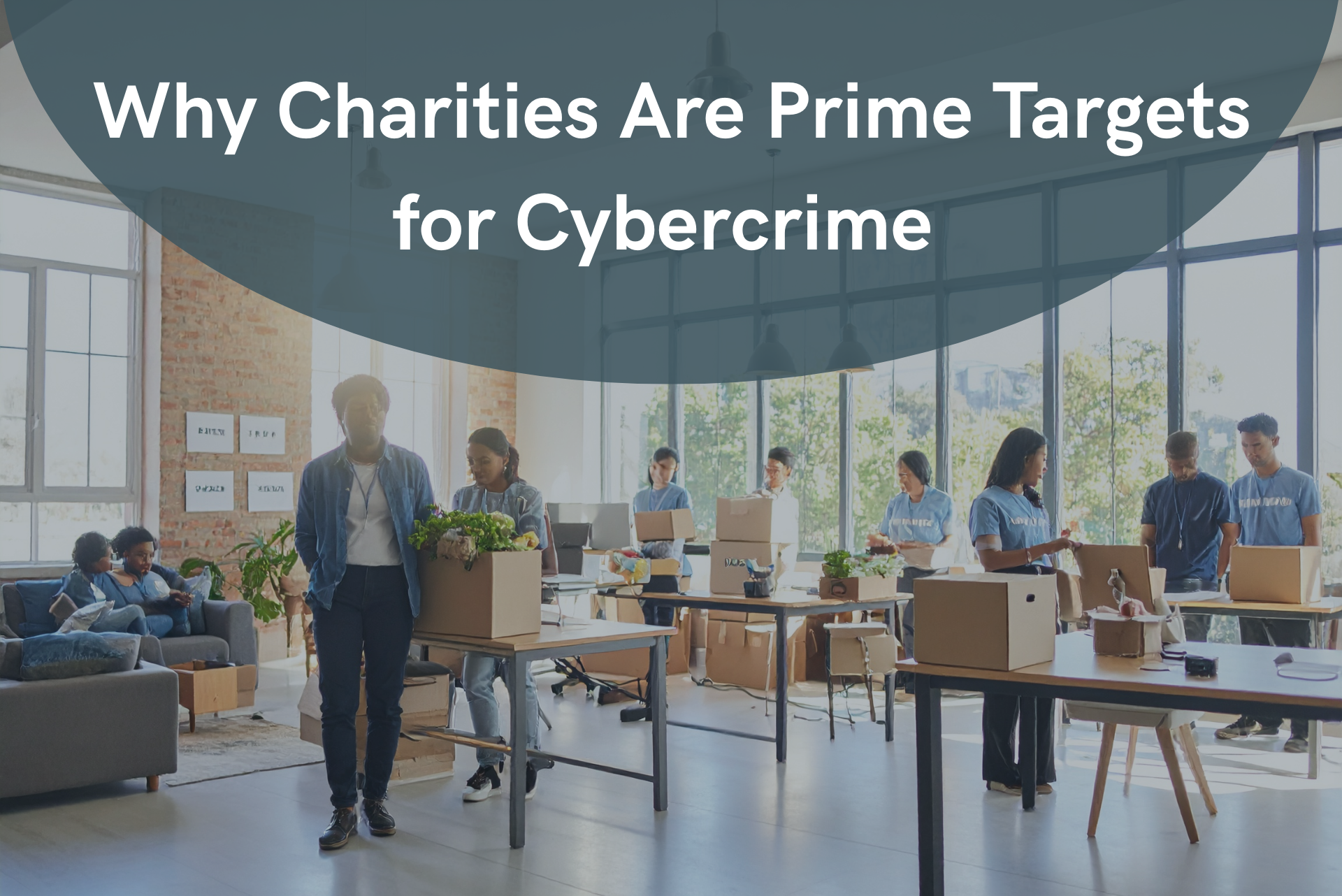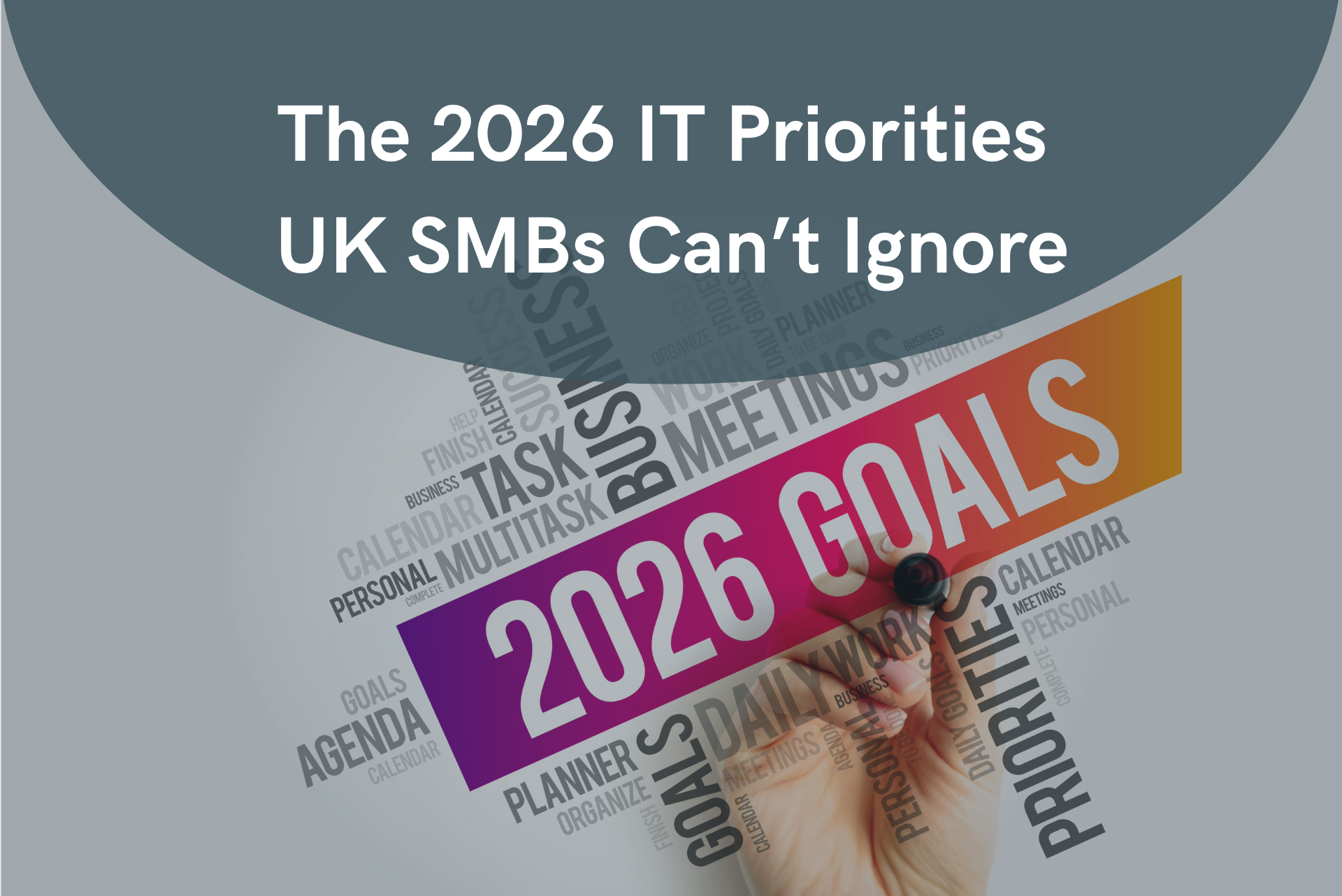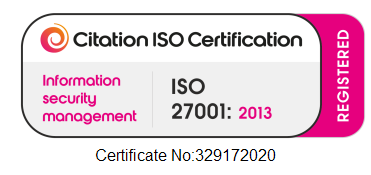Why Charities Are Prime Targets for Cybercrime
Think your charity’s too small to be hacked? Think again.
Cyber criminals don’t discriminate. In fact, they often target non-profits because they believe they’ll be under-protected. And sadly, they’re often right.

Small teams, tight budgets, and older systems make charities an ideal entry point for attackers looking to steal data, exploit weak defences, or demand ransom. From phishing emails to full-blown breaches, the threats are real—and growing.
But there’s good news: most cyber-attacks are preventable. And protecting your organisation doesn’t need to be expensive or overwhelming.
Why Non-Profits Are Vulnerable
You might not have millions in the bank. But the data your charity holds is extremely valuable. Donor information. Payment details. Staff and volunteer records. Sensitive service user data. To a hacker, that’s a goldmine.
Here are four reasons why charities are often seen as easy targets:
1. High-value data
Even small organisations collect personal, financial, and health-related data. If stolen or leaked, this data can be sold or used for identity theft.
2. Limited cyber training
Most charity staff and volunteers aren’t IT professionals. They’re focused on service delivery—not phishing detection. That makes them more likely to click on malicious links or fall for fake invoices.
3. Outdated systems
Older laptops, unsupported operating systems, and unsecured networks create easy entry points for hackers. Without patches and updates, these systems are ticking time bombs.
4. High-pressure environments
Charities often operate in fast-moving, high-stakes settings. That sense of urgency can lead to snap decisions like clicking a suspicious link or responding to a fake invoice.
Common Threats to Watch For
The threats charities face are the same as those hitting large corporations just without the luxury of a big IT department to catch them.
Here are the top three risks we see:
- Phishing scams
Emails pretending to be from banks, suppliers, or even your own staff that trick recipients into sharing login details or downloading malware. - Ransomware
Malicious software that encrypts your systems and demands payment to restore access. If you don't have backups, your data and your operations could be lost. - Data breaches
Unauthorised access to personal or financial information. This can lead to GDPR fines, reputational damage, and the loss of donor or partner trust.
What a Cyber Attack Could Cost Your Charity
Cybercrime isn’t just about stolen data it’s about stolen time, credibility, and peace of mind.
A successful attack can:
- Interrupt your services
- Force you to cancel campaigns
- Trigger a regulatory investigation
- Scare off donors and partners
- Cost thousands in recovery fees even if no ransom is paid
And most devastating of all, it can damage the trust your organisation has spent years building.
How to Protect Your Mission
You don’t need a huge IT budget to be cyber-secure. You just need the right plan and a partner who understands your world. Start with the basics:
Train your team
Cybersecurity awareness is your first and best defence. Teach staff and volunteers to recognise red flags, question unusual requests, and report concerns early.
Use multi-factor authentication (MFA)
This adds an extra layer of protection by requiring a second step (like a text code or authenticator app) when logging in. It stops most password-based attacks cold.
Encrypt sensitive data
Whether it's stored in the cloud or on a laptop, encryption ensures that data remains unreadable if it falls into the wrong hands.
Backup regularly
Backups should be automatic, off-site, and tested. If you're hit by ransomware, a backup is your lifeline.
Get expert support
Partner with a trusted provider like Cranborne who can help monitor threats, patch vulnerabilities, and support your team without the jargon.
How Cranborne Supports Charities Like Yours
We specialise in helping non-profits strengthen their cybersecurity in ways that are realistic, scalable, and affordable. Our care-led approach means we don’t just secure systems—we protect missions.
Here’s how we can help:
- Cybersecurity audits – We review your current setup and identify your biggest risks.
- Affordable IT improvements – We implement secure cloud storage, encrypted email, and MFA.
- Staff training – We deliver tailored workshops or online sessions to upskill your team.
- Ongoing monitoring & support – We watch your systems for threats so you don’t have to.
- Disaster recovery planning – If something goes wrong, we’ll help you bounce back fast.
Whether you're a small charity with no IT team, or a larger organisation looking to tighten your security posture, we tailor our services to fit you.
It’s Time to Take Cybersecurity Seriously Before You Have To
You don’t have to do it all at once. But doing nothing? That’s a risk your charity can’t afford.
Let us help you take the first step. No scare tactics. No tech jargon. Just clear advice, smart protection, and support you can rely on.




